The Fairies of Ireland: Legends, Folklore, and Magical Inspiration
Ireland is a land of rolling green hills, ancient stone circles, and mist-covered valleys. But what truly sets it apart is its folklore—stories that have been told and retold for generations. At the heart of this folklore are the fairies of Ireland, known locally as the Aos Sí or the Good People.
For centuries, Irish fairies have captured imaginations with their beauty, mystery, and mischief. These tales have inspired art, music, and even modern fairy gardens, where people recreate little pieces of Ireland’s magic in their own homes. If you’ve ever wondered about the origins of fairy folklore—or you’re looking for inspiration for your own fairy collection—then the stories of Ireland’s fairies are a perfect place to begin.
Who Are the Fairies of Ireland?
In Irish mythology, the fairies are said to descend from the Tuatha Dé Danann, a race of magical beings who once ruled Ireland before retreating underground. There, they built hidden palaces beneath the hills, forts, and mounds that dot the landscape.
Unlike the delicate, winged figures seen in Victorian illustrations, Irish fairies are more human-like in appearance. They can be dazzlingly beautiful, fierce, mischievous, or protective. Some bring good fortune, while others can cause trouble if disrespected. This dual nature made people cautious—always leaving offerings, never cutting down a lone hawthorn tree, and treating the unseen with respect.
For today’s collectors, a Make and Paint Your Own Fairy Door Set is the perfect modern way to honour these traditions, inviting fairies into your garden with creativity and care.
Fairy Forts and Fairy Trees
Scattered across Ireland are thousands of ancient earthworks, often referred to as fairy forts. These ringforts, some over a thousand years old, are believed to be entrances to the Otherworld. Folklore warns against disturbing them—building on or destroying a fairy fort was thought to bring bad luck.
Similarly, the hawthorn tree holds a special place in Irish belief. Known as the “fairy tree,” it often grows alone in fields, marking a place where the Good People are said to gather. Farmers would plough around these trees rather than cut them down. Even in modern Ireland, roads have been rerouted to avoid damaging fairy sites—proof of just how deeply these beliefs still run.
Adding a Solar Powered Pear Fairy House or a Mystical Tree House to your own garden echoes this sense of respect—small shrines to the unseen.
The Trickster Nature of Fairies
Irish fairies are often portrayed as playful tricksters. They might:
- Lead travellers astray with dancing lights in the dark.
- Borrow household objects, only to return them in strange places.
- Cast mischief on crops or animals.
More ominously, folklore tells of fairies stealing away humans. The most famous example is the changeling myth, where a healthy baby might be swapped with a sickly fairy child. These tales, while dark, served to explain unexplainable events in rural communities.
This mischievous spirit has carried into modern fairy play—when you set up mini mushrooms, coloured moss, or a pink flower fairy house, you’re continuing an age-old tradition of imagination and playful mischief.
The Fairy Queen and the Fairy Host
Many legends tell of fairy royalty, often ruling from beneath the hills. Queens such as Áine, goddess of summer and love, or Cliodhna, famed for her beauty, appear in regional stories. These rulers could bless or curse, offering protection to those who respected them.
The fairy host, meanwhile, was said to sweep across the land at night, riding the winds in great processions. To encounter them was dangerous—one might be carried away into the Otherworld. Even the rustling of leaves at dusk could be explained as their passing.
Recreate these magical gatherings with a Super Multi Set with Solar Houses, perfect for setting a scene of dancing fairies and glowing homes.
Fairies and the Irish Calendar
Fairies were closely tied to Ireland’s ancient festivals:
- Samhain (Halloween): The boundary between worlds was thinnest, and fairies roamed freely. Families left offerings of food or milk to keep them appeased. This tradition lives on in our own Halloween celebrations today.
- Beltane (May Day): Fires were lit to protect against fairy mischief, and cattle were blessed to ensure fertility and good fortune.
Seasonal fairy sets—like witches, pumpkins, and potion jars for Halloween, or flower fairy houses for spring—are a direct continuation of these traditions, helping us mark the turning of the seasons with imagination and magic.
The Banshee – A Darker Fairy
Not all Irish fairies were friendly. The Banshee (bean sí, meaning “fairy woman”) was a spirit associated with mourning. She was said to wail outside homes as a sign that death was near. Far from being evil, she was a messenger, connected to Ireland’s deep respect for ancestors and family ties.
While the Banshee may not inspire cute garden figurines, her story reminds us that fairy folklore wasn’t just about playfulness—it was a way for people to make sense of life and death.
Modern Belief in Fairies
Do Irish people still believe in fairies today? The answer is complicated. While most see them as folklore, there is still a deep cultural respect. Farmers avoid cutting down fairy trees, construction crews take care around fairy forts, and storytellers keep the traditions alive.
For visitors and collectors, this means there’s a living link between past and present. When you set up a solar fairy cottage or add glowing mushrooms, you’re not just decorating—you’re honouring a tradition that stretches back centuries.
Why Fairies Still Matter
Fairy folklore continues to resonate for several reasons:
- Connection to Nature – Irish fairies remind us to respect the land, trees, and seasons.
- Storytelling Tradition – These tales link families and communities across generations.
- Imagination and Play – Fairy stories inspire creativity, art, and modern fairy gardens.
For buyers of fairy items, this means every tiny mushroom, fairy house, or fairy door carries more than just charm—it carries echoes of a cultural tradition that has lasted for centuries.
Visiting Fairy Sites in Ireland
If you’re planning a trip to Ireland, here are some ways to immerse yourself in fairy folklore:
- Explore fairy forts and mounds across the countryside, always with respect.
- Visit woods and trails decorated with fairy doors and sculptures.
- Listen to a seanchaí (traditional storyteller) share myths by the fire.
- Attend festivals that celebrate Samhain or Beltane, where fairy lore is part of the ritual.
Even if you can’t travel, you can bring Ireland’s magic home with your own fairy garden collection, filled with houses, figurines, and seasonal sets.
Final Thoughts
The fairies of Ireland are not just charming myths. They are a living thread of folklore that connects people to the land, to nature, and to imagination itself. Whether they appear as tricksters, queens, or guardians of sacred places, fairies continue to enchant us.
By creating fairy gardens or collecting fairy figurines, we keep these stories alive in our own homes. Each miniature door, pumpkin accessory, or flower fairy house becomes more than decoration—it becomes part of a story that stretches back through generations of Irish tradition.
So next time you add a new fairy piece to your collection, remember: you’re not just decorating a garden—you’re continuing the legacy of Ireland’s magical fairies.



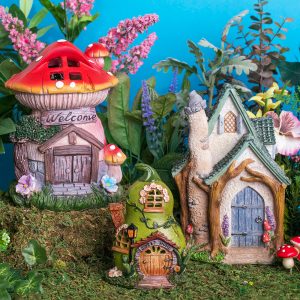
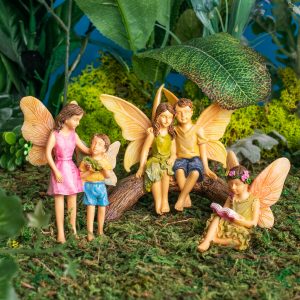
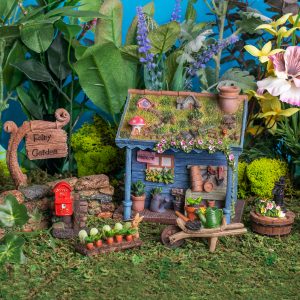
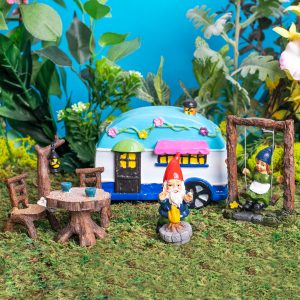
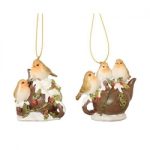
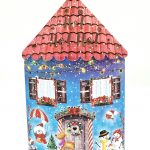
0 Comments